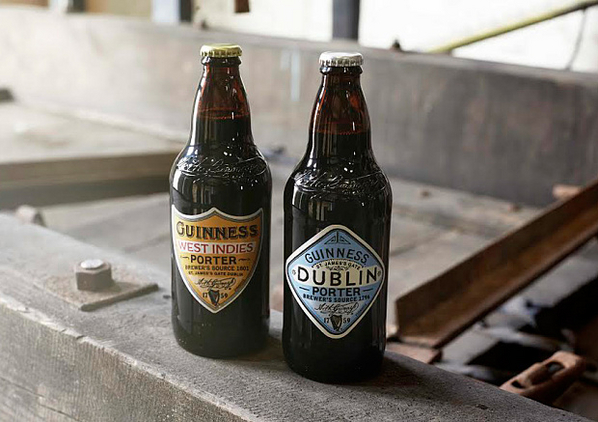Great beers that left their mark in 2014
Added: Wednesday, December 31st 2014
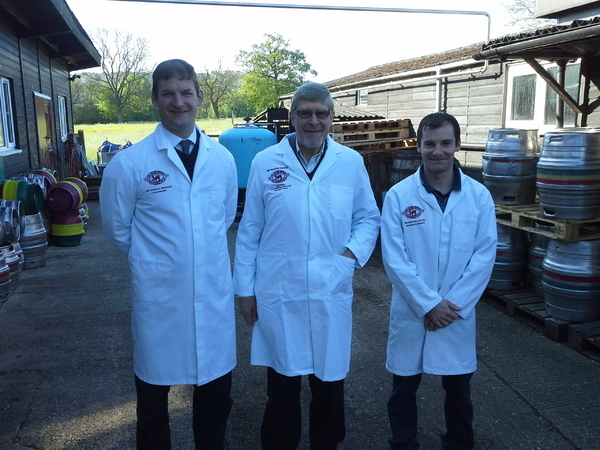
My choice of the best beer of 2014 goes to Chiltern Brewery’s Flanders Pale Ale (6.2%), which marked a major departure for the brewery. As my name and face appear on the label, I must stress that my involvement with the brewing of the beer was no more than helping to pour a few sacks of grain into the mash tun. The real work was done by Tom Jenkinson (left in picture) and Dave McGovern (right).
The beer was brewed on 14 May and it was conditioned in the brewery and released at the end of July. It was the result of a discussion Tom and I had earlier in the year about a beer to mark the start of World War One. Neither of us wanted to celebrate the war but we felt it would be appropriate to stress the strong links between Belgium and Britain by producing a beer style that’s popular in both countries. English pale ale became especially sought after during the war and a number of Belgian breweries started to make their own interpretations of the style – and continue to do so to this day.
Tom and I researched pale ales from the early 20th century and Tom came up with a recipe that for the first time meant Chiltern would use ingredients that were not all sourced from this country. Until Flanders Pale Ale was brewed, Chiltern’s founder Richard Jenkinson and his son Tom have used only English barley – usually Maris Otter – and hops.
But in order to give the pale ale a true “hands across the sea” feel, Tom added some Vienna malt and a hop variety grown in Belgium. Vienna malt is similar to English crystal and gives a delicious spicy and nutty note to the beer. In spite of the name, the malt Tom used came from the famous brewing and malting town of Bamberg in Germany. The hop was Challenger, an English variety but the batch Tom used was grown in the hop fields near Poperinge in Belgium, a town that’s so proud of its hops that an emblem of the plant is embedded in the pavements and points visitors to the local Hop Museum. The pale malt was Maris Otter.
The beer is bottle conditioned and by the end of 2014 Tom Jenkinson modestly said it was “developing well”. I would go further and say it’s superb. It has a spicy and fruity hop note beautifully balancing the biscuit and nutty malt character. The finish is long, with spices and bitter orange fruit melding with the juicy malt notes. As a result of its strength, this is a beer that can be laid down and aged for several years. www.chilternbrewery.co.uk/brewery-shop
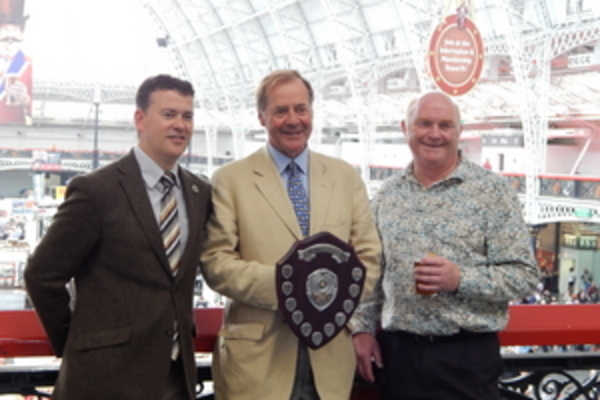
In August, Timothy Taylor in Keighley, Yorkshire, won the Supreme Champion Beer of Britain award at CAMRA’s Great British Beer Festival staged in London Olympia. The brewery has won the title four times with its premium Landlord pale ale but this time it went to the 4% Boltmaker, the new name for the brewery’s Best Bitter and which celebrates one of Keighley’s old industries. The picture shows (left to right) Grant Simpson, managing director Charles Dent and head brewer Peter Eells with their award at the festival.
Some commentators on social media said the choice was “boring”. The beer was chosen by several panels of judges and all the tastings were blind. And it should be borne in mind that many drinkers enjoy well-balanced English bitters and it would be tragic if the style were to disappear. “Extreme beers” are not to everyone’s taste and -- as Jane Peyton has argued on this website -- beer has to be a balance between malt and hop flavours.
http://protzonbeer.co.uk/features/2014/11/25/cutting-with-the-grain-to-make-great-beer
Moorhouse’s of Burnley brought back memories of its victory in 2000 as Champion Beer of Britain with Black Cat mild by introducing a beefed-up version, Black Cat Reserve, which at 7% recalls the classic strong milds of the 19th and early 20th centuries. The bottled beer, available in Booths supermarkets, is brewed with pale, crystal and chocolate malts and hopped with a rare Polish variety, Junga. It has a toasted grain, coffee, cherries and blackcurrants aroma and palate. www.moorhouses.co.uk
Fuller’s continued the revival of dark beers with Black Cab Stout (4.4%) that celebrates the role of the famous London mode of transport. Head brewer John Keeling underlined his ability to bring back old ingredients and to offer unusual flavours in his beers by using a malted grain called Imperial along with pale, crystal and chocolate. The hops are Fuggles and Goldings. The beer has a creamy malt, molasses and bitter chocolate character balanced by peppery and spicy hops.
Also in London, The Kernel in Bermondsey launched its interpretation of a Berliner Weisse with London Sour (3.2%). The classic German wheat beer is brewed with the use of a lactobacillus culture that was developed in the early 20th century at Berlin’s brewing school, VLB. It’s believed the sour beer style was brought to Berlin by Huguenots fleeing persecution in the 16th and 17th century who encountered lambic beer in Flanders as they migrated north. The beer is low in alcohol and also in hops, as hop bitterness does not marry well with the sharp, acidic character of the beer created by both wheat and yeast. Kernel’s version has a powerful, lingering tart citrus note of lemon and lime, with a musty yeast note on the nose that brewers call “horse blanket”. It’s a challenging but refreshing beer. www.thekernelbrewery.com
More sour and acidic beers emanate from Wild Beer in Somerset, which experiments with wild yeast cultures and ageing in wood. Its Evolver is described as an IPA but it’s not a version Burton-on-Trent would recognise! It starts as a conventional pale ale but is fermented solely with Brettanomyces, the culture that forms the signature of lambic and gueuze beers in Belgium. The brewers say it takes three months for “Brett” to kick in and eight months for it to take full control of the aromas and flavour of the beer. Evolver has a minty, herbal character with “horse blanket” from the yeast and powerful hints of over ripe bananas and sour cream. Unusually for the style, a lare amount of hops are used and they are present with a big peppery note. www.wildbeerco.com
Windsor & Eton Brewery added to the IPA revival with Kohinoor (5%) that alongside conventional pale malt and cane sugar plus Chinook, Pacific Jade and Simcoe hops has a powerful Eastern Promise note with the addition of jasmine petals, coriander and cardamom seeds. It’s a spicy, herbal, fruity and refreshing beer with a long finish in which the unusual blend of ingredients lingers tantalisingly on the tongue and throat. www.webrew.co.uk
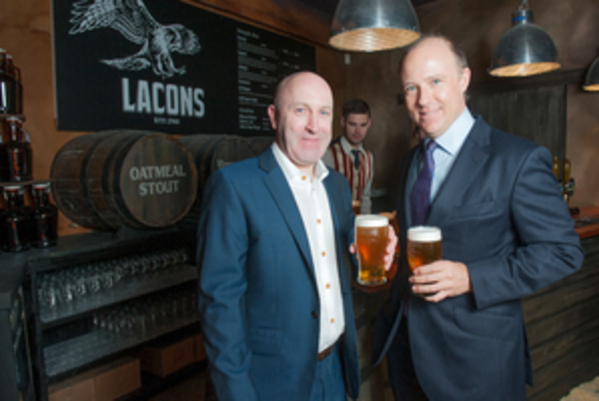
One of the most exciting events of the year was the launch of Audit Ale by Lacon’s Brewery in Great Yarmouth. The new Lacon’s opened in 2013 and brings back the name of a revered Norfolk brewery bought and closed by Whitbread in the 1960s. As well as mild, pale and stout, Lacon’s brewed audit ale for many years for Trinity College in Cambridge. It’s a style of beer that’s a version of barley wine and was produced by both colleges and landowners for centuries to celebrate the finalising of the annual accounts – the audit. Lacon’s Audit Ale was 8% and the new version produced by head brewer Wil Wood is based on the 1960s recipe, with Maris Otter pale and crystal malt. Bramling Cross hops are used and the only change to the recipe is the introduction of the American variety Cluster. The tawny ale has a big aroma and palate of juicy and nutty malt, a powerful hint of butterscotch and tart hop resins (pictured above is lLcon's managing director Mick Carver, left, with William Lacon of the brewing family.. www.lacons.co.uk
The interest in beers aged in whisky casks has been deepened by the arrival of Theakston’s Distiller’s Cask. It’s fitting that Theakston’s in Masham, North Yorkshire, should produce a beer aged in oak as it employs a full-time cooper – only one of two left in the country -- to fashion and rebuild the beers it serves “from the wood”. The whisky casks used to age the 6.5% ale come from the Speyside region of Scotland and the beer is rich with vanilla, oak and smoke flavours allied to powerful additions of caramelised fruits and honey. There’s a warming whisky note in the finish of the beer. www.theakstons.co.uk
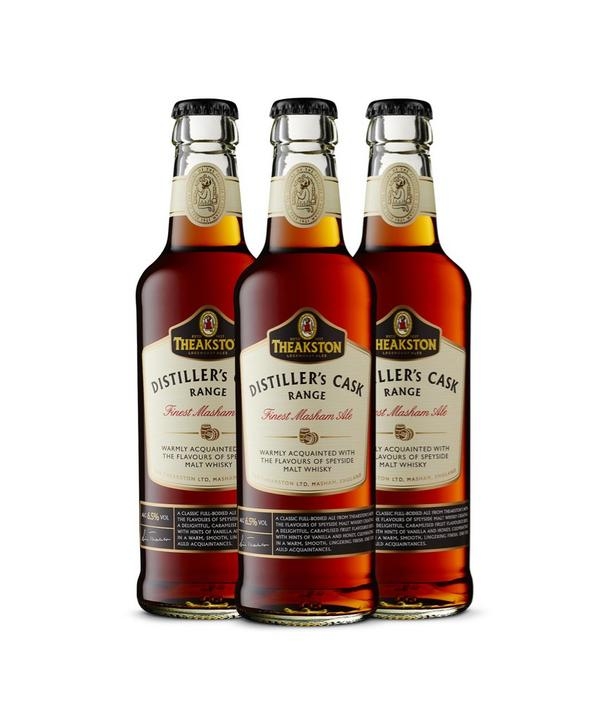
The major surprise of the year was the arrival of two historic beers from Guinness in Dublin. No doubt spurred into action by the emergence of a small but dynamic craft beer movement in Ireland, Guinness has dug deep into its archives to create Dublin Porter and West Indies Porter. The Dublin beer is based on a 1796 recipe, the West Indies version dates from 1801. Guinness has used its marketing muscle to get the beers into major supermarkets and they are even promoted on posters and billboards.
At 3.8%, the Dublin Porter is far lower in alcohol than the beer nicknamed “Plain” in Dublin bars and renowned in stories and poems of the 18th and 19th centuries. But the West Indies Porter at 6%, forerunner of Foreign Extra Stout, hits the historical mark. The aroma is herbal and spicy, with coffee and liquorice notes, followed by a rich palate bursting with roasted grain, espresso coffee, bitter hops, toffee and liquorice. The finish starts sweet but burnt fruit, bitter coffee, creamy malt and spicy hops blend into a long and satisfying finale.
